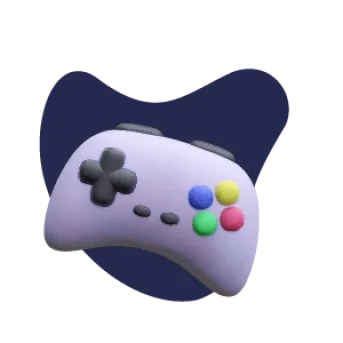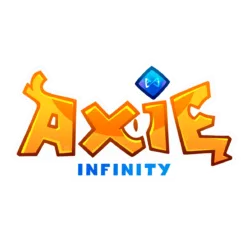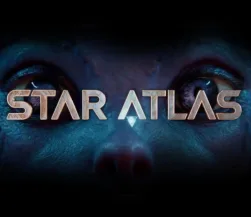TL;DR:
- GameFi stands for Game Finance
- GameFi projects are built on blockchain technologies and work through smart contract functionalities
- Players can earn rewards and generate income by playing
- GameFi is characterized by play-to-earn (P2E) or move-to-earn (M2E) game modes
- The use of NFTs in GameFi empowers players by enabling them to take ownership of their in-game assets
How does GameFi work?
GameFi has the same gameplay as traditional games, but these games are built using game engines and blockchain technology. The principle of GameFi is that the game developers reward players with in-game assets (NFTs) for their time spent playing the game. This is called a play-to-earn game and changes the dynamic and the level of engagement between developers and users since it allows players to monetize their game time.
Blockchain smart contracts on Ethereum or Solana lend a helping hand in developing P2E games. These allow the game to record in-game assets on the blockchain. Through smart contracts, NFTs can be transferred to individual players, allowing them to own and control their in-game assets fully.
Play-To-Earn games have gamified the financial experience. Developers allow players to swap, stake, mint, or lend digital assets, which create enclosed game economies. In return, players are rewarded with passive rewards.
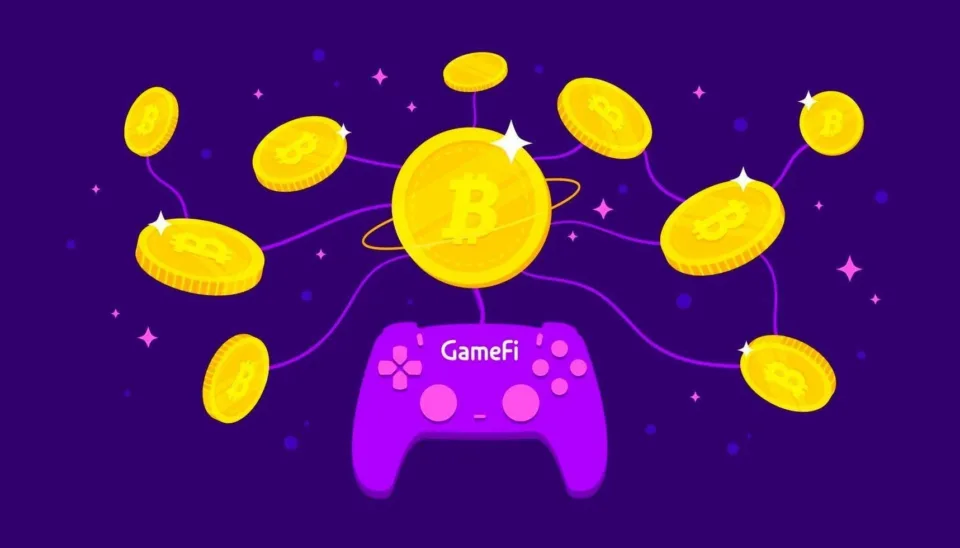
In-Game Economies
In-game economies rely on a native token created to provide utility in the game. This means using the token in-game to purchase avatars, earn rewards, or stake for passive income.
Each game develops a community where game assets are traded, and players fight for the best possible outcomes. These game economies are well thought of by game developers who ensure token supplies don’t cause inflation and have a steady stream of releases aligned with user growth. This is the primary way these games can continue running since most of the decisions are taken by developers and users – through governance votes.
Creating game economies is no easy task; every stakeholder (gamers, developers, and participants) must contribute to not collapse the game through rogue activities.
GameFi Stakeholders
Stakeholders in the GameFi environment are active parts who contribute to the game’s development and activity. They can range from the development side to players. Since GameFi is decentralized and no central authority owns the project, every stakeholder is equally essential and helps keep the ecosystem intact and interconnected.
Game Studios
Game studios are the developers and publishers responsible for creating P2E games. They design the in-game economies, develop gameplay mechanics, and implement blockchain technology to facilitate secure transactions and ownership of digital assets. Game studios play a crucial role in ensuring the game is set up to standard and are developing according to the roadmap.
Metaverse
The metaverse refers to interconnected digital worlds where game activities occur; user avatars interact, participate in activities, and create or trade digital assets. In the context of GameFi, the metaverse serves as a platform for hosting P2E games and encouraging gameplay, which rewards users for their participation. Currently, each Metaverse acts as an individual silo with limited abilities to facilitate cross-platform asset promotion or interoperability.
Gaming Guilds
Gaming guilds are groups of players who join forces to achieve common goals, share resources, and maximize their earning potential. These guilds often provide their members with financial support, training, and mentorship, helping them succeed in the in-game economy. By pooling resources and knowledge, gaming guilds can influence the market dynamics and generate more rewards in a shorter time span.
NFT Renting Platforms
NFT renting platforms enable players to lease their in-game assets, such as characters and items, to boost their player ranking and summon or generate rarer NFTs. This creates additional income streams for asset owners and allows players without significant upfront investments to participate in P2E games. NFTs are based in-game.
Gaming Marketplace
Gaming marketplaces facilitate the buying, selling, and trading of in-game assets, such as NFTs and virtual currencies. They provide a platform for players to monetize their digital assets and help maintain a healthy supply and demand balance within the in-game economy.
Game Launchpads
Game launchpads support developing, funding, and promoting new P2E games. They often offer token sales, marketing assistance, and community-building services to help game studios bring their projects to life. By facilitating the growth of new P2E games, launchpads contribute to the overall expansion and diversity of in-game economies.
Earning Incentives Through Gaming: Play-to-Earn (P2E) in the Gamefi Realm
NFTs and cryptocurrencies are the reason why players want to play P2E games. It gives them new opportunities to trade their time for digital assets.
In P2E games, users can earn multiple types of rewards, including:
Token rewards: These are the easiest way for players to earn as it involves completing quests, battling in a PVE environment, and being active in the community.
NFT rewards: NFT rewards are given to players by competing in PvP events where the winner takes all, or they become valuable on third-party marketplaces where players can exchange them for crypto.
Staking: Players can stake their in-game tokens and earn additional tokens or governance points at a fixed APY.
Lending: Users can rent their NFTs to other players who want to summon or upgrade their character. In exchange, NFT holders charge a smaller renting fee than buying the NFT outright.
Digital Ownership
Play-To-Earn games give players complete digital ownership of their in-game assets, not just in-game rights. Through tokens and NFTs, P2E games ensure that the digital rights of every in-game asset are securely added to the blockchain code, which gives players complete control over how they want to use their assets.
Digital ownership is a key component of GameFi compared to Web2 game models; in Web3, players and the community have control and ownership over the game. Previously the game developers owned all assets, and all decision processes weren’t taken to consider the community’s needs. Web3 gaming has drastically changed the developer-player dynamic, rewarding players for their time and offering them a vote in how development should be done – using governance tokens.
The History of Gaming
From the first video games to the emergence of free-to-play games and the rise of play-to-earn models, the gaming industry has pivoted to address the current demand of each gamer. While some game titles and styles are timeless, the only changing factor being how players are rewarded, GameFi presents a solid case of changing how games are perceived. Let’s take a closer look at these pivotal stages in gaming history.
The First Video Games
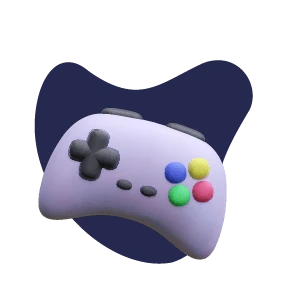 The origins of video games can be traced back to the 1950s and 1960s, when computer scientists began creating simple games and simulations as part of their research. One of the earliest examples is “OXO,” a version of tic-tac-toe that became known as “Noughts and Crosses” and was developed by Alexander S. Douglas in 1952. However, it wasn’t until the 1970s that video games entered the mainstream with the release of arcade classics like Pong (1972) and Space Invaders (1978). These games laid the foundation for the emerging gaming industry, which would soon expand into games played on home consoles and personal computers. The emergence of home devices would kickstart the growth of a brand-new entertainment industry, mainly targeting young adults.
The origins of video games can be traced back to the 1950s and 1960s, when computer scientists began creating simple games and simulations as part of their research. One of the earliest examples is “OXO,” a version of tic-tac-toe that became known as “Noughts and Crosses” and was developed by Alexander S. Douglas in 1952. However, it wasn’t until the 1970s that video games entered the mainstream with the release of arcade classics like Pong (1972) and Space Invaders (1978). These games laid the foundation for the emerging gaming industry, which would soon expand into games played on home consoles and personal computers. The emergence of home devices would kickstart the growth of a brand-new entertainment industry, mainly targeting young adults.
Free-to-Play Games
The free-to-play (F2P) model emerged in the early 2000s as a response to the need for sustainable revenue streams. F2P games allow players to access the core gameplay experience without any upfront cost. Instead, these games generate revenue through in-game purchases, which would help players differentiate from one another and even give their characters in-game advantages. This model proved to be highly successful, and games like SecondLife, RuneScape, League of Legends, and Fortnite have attracted millions of players worldwide – generating millions in revenue. The F2P model has been implemented in other gaming sectors and has gained popularity, especially in mobile games. Although the model does give game developers the most power, it’s a trademark that followed the Web2 meta.
GameFi and the Birth of Play to Earn
The Play-To-Earn model is the latest and most rewarding development in the gaming sector, as it combines decentralization and blockchain technology with a rewards system that could be monetized. There are instances where players in third-world countries have played games like Axie Infinity and earned more than the standard minimum wage in their country. The benefit of P2E games is that they help create new economic opportunities for players, something previous game iterations would often omit. As the first blockchain game, CryptoKitties used NFTs to award proof of ownership to token holders. However, the true P2E model that offered monetization opportunities is Axie Infinity, Star Atlas, or Gods Unchained. The current play-to-earn game mechanics are least developed compared to Web2 games, especially in graphics and gameplay; GameFi is growing rapidly with investments, new features, and game modes are being added to ensure the game experience.
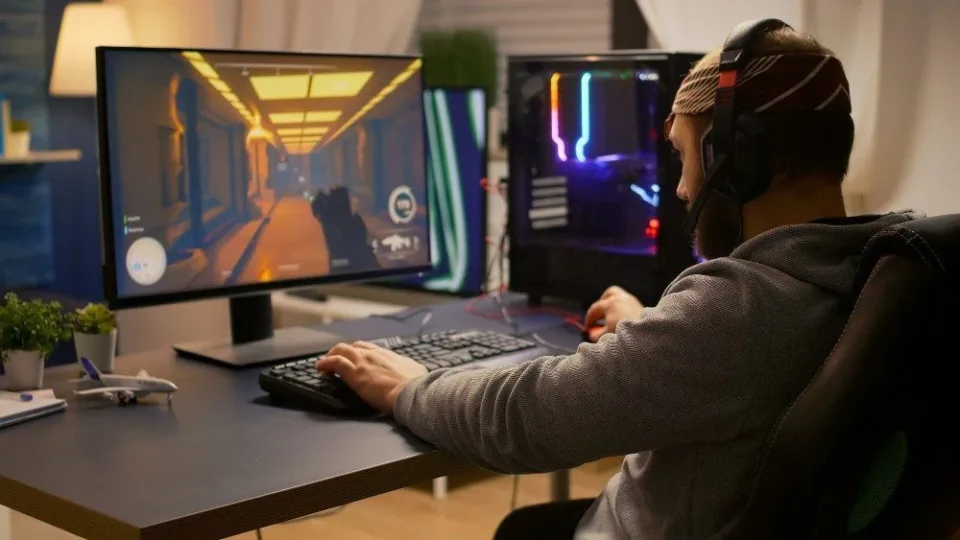
Metaverse
The metaverse and GameFi, while distinct concepts are closely interconnected, with GameFi acting as a fundamental building block for the gaming aspect of the metaverse.
The metaverse refers to a game’s collective virtual space of connected digital environments where users can interact, engage in activities, and create or trade digital assets.
GameFi is a blockchain byproduct for Web3 audiences where every user contributes to the growth of the game’s ecosystem and gamifies the financial experience.
While the metaverse is where interaction occurs in Web3, it can also be considered a breeding ground for P2E games – at least some of them. That’s only if we consider a metaverse part of a general omniverse where all games are interconnected. Such examples include The Sandbox or Decentraland, which allows users to explore access and interact with the game environment. By default, however, each GameFi has its metaverse where digital assets like tokens and NFTs can be used within the game’s environment. Through blockchain and DeFi features, GameFi allows for decentralization, user control, and community involvement within the gaming sphere. This decentralized approach is crucial for ensuring that the metaverse remains a user-focused environment, free from manipulation or undue influence by large corporations seeking to profit at the expense of individual users.
GameFi’s emphasis on community-driven governance prevents corporate hegemony and fosters an equitable, inclusive metaverse that benefits everyone. Making GameFi community-driven and decentralized allows projects access to resources, decision-making, and economic opportunities, ensuring the metaverse remains a diverse and collaborative space where users can create and explore without external influence. This helps make the decentralized metaverse a virtual space driven by communities rather than capitalistic interests.
Play and Earn
One of the most significant benefits of GameFi is the P2E model, which allows players to earn while participating in games. The level of participation varies per project and depends on which types of tasks have to be completed. This model incentivizes players to engage with the game actively and includes in their gaming activity all elements. In turn, the game helps turn time and effort into physical rewards that users can sell or trade for crypto and then fiat in the real world.
Asset Ownership
GameFi enables true asset ownership, allowing players to own, trade, and monetize their assets, such as land, items, characters, and other in-game assets. These digital assets are represented as NFTs using smart contract capabilities, providing players with verifiable digital proof and the ability to showcase their ownership, transfer, or sell assets.
Compelling Gaming Incentives
GameFi offers compelling gaming incentives that encourage long-term player engagement and retention. By giving players rewards through participation, GameFi transforms the process of gaming into a quest for generating new forms of income and participating in community-driven economies. As such, GameFi makes users more dedicated to the mechanics and community and helps them invest more time into generating further incentives.
Participation at Low Cost
GameFi allows players to participate in games at a low cost, often with minimal or no upfront investment. This makes blockchain games easier to access, decreasing the entry barrier and enabling a wider audience to benefit from the P2E model.
Taking Control over Gaming Incentives
DAOs and smart contract features help automate the GameFi mechanics and avoid human error and influence when deciding how to issue game incentives. This removes any points of failure, increasing trust among game communities and their players. Moreover, smart contract features give asset owners complete control over their virtual assets, within and outside the game. This results in providing more value to the end user, as earned incentives have more intrinsic value.
The Top 5 GameFi Examples
Axie Infinity
Axie Infinity is a popular play-to-earn game built on the Ethereum blockchain, where players collect, breed, and battle fantasy creatures called Axies. Players can earn cryptocurrency rewards that can be traded or sold in the real world by participating in battles and completing various tasks.
Cornucopias
Cornucopias is an upcoming triple-A action RPG game built on the Ethereum blockchain. It promises to deliver stunning graphics, engaging gameplay, and a rich narrative experience. The game aims to incorporate GameFi elements, allowing players to earn rewards, own in-game assets, and participate in a player-driven economy.
Star Atlas
Star Atlas is a next-generation multiplayer online game set in a vast, open-world universe. Built on the Solana blockchain, this space-themed game combines strategy, exploration, and resource management elements. Players can own, trade, and monetize in-game assets such as spaceships, virtual land, and resources, enabling an immersive play-to-earn experience.
The Sandbox
The Sandbox is a virtual world built on the Ethereum blockchain, where players can create, own, and monetize their gaming experiences using the platform’s utility token, SAND. The game features a wide range of tools for building and customizing virtual environments and an NFT marketplace where users can buy, sell, and trade in-game assets.
Gods Unchained
Gods Unchained is a trading card game built on the Ethereum network, offering a play-to-earn model for players who enjoy strategic card games. The game features NFT-based cards that players can buy, sell, or trade on various marketplaces, allowing them to monetize their collection and gameplay.
How to Get Started with GameFi
Getting started with GameFi is an exciting journey that opens up new gaming opportunities. To help you get started, let’s use Axie Infinity as an example, one of the most popular GameFi platforms currently available.
Create Crypto Wallet
The first step to getting started with GameFi is creating a cryptocurrency wallet. A crypto wallet allows you to store, send, and receive digital assets like cryptocurrencies and NFTs. For Axie Infinity, you will need a wallet compatible with the Ethereum network, such as MetaMask or Trust Wallet. Follow the instructions provided by the wallet provider to set up your account, store your recovery phrase safely, add the Ronin Network, and send tokens to your wallet address.
Connect your Wallet to Axie Infinity
To connect your wallet to Axie Infinity and start playing, go to the game’s website, click “Play Now,” select “Connect Wallet,” choose between MetaMask or Trust wallet, follow the wallet contracts, and sign the authorization to link your account to the Axie Infinity game. Make sure to bridge the wallet to the Ronin app to ensure your game assets are ready. Once connected, your wallet will be linked to your Axie Infinity account.
Check the Requirements to Play
You must run through a series of checkmarks to ensure you can play Axie Infinity without issues. For that, you need to check the following:
- Axies: To start playing the game, you need at least 3 Axies to form a team and participate in game battles. You can purchase game characters from the Axie marketplace using your tokens on the Ronin chain.
- Sufficient balance: Always ensure you have enough Ethereum (ETH) tokens to fill in your order and cover gas fees.
Ronin Wallet and Ronin Bridge: Axie Infinity has moved to a new sidechain called Ronin but still uses Ethereum for network security. To start playing, you must create a Ronin Wallet and use the Ronin Bridge to transfer your assets from the Ethereum network to the Ronin sidechain.
The Merge of DeFi and GameFi
DeFi elements are added to the GameFi mechanics, allowing players to experiment with these new features in the game environment. One of the best examples of games that integrated a bigger suite of DeFi features is DeFi Kingdoms which successfully linked staking, liquidity farming, and asset swaps within the same gameplay. With staking, Play-To-Earn games can ensure no drop in liquidity and maintain the value of the in-game assets. In return, players need to lock their tokens for a longer period and are rewarded with tokens providing incentives to hold onto their tokens.
Similarly, liquidity provision enables players to contribute their assets to decentralized exchanges or liquidity pools, where they can earn fees from other users who trade or exchange these assets. This participation helps to create a more liquid and efficient market for in-game assets, making it easier for players to buy, sell, and trade them as needed. Yield farming, another DeFi element often introduced in GameFi projects, incentivizes players to engage with various financial services within the game ecosystem, such as lending, borrowing, or providing liquidity.
By incorporating DeFi elements, these games can create more robust and sustainable Web3 game economies that encourage long-term participation and investment from players while ensuring that the game’s financial ecosystem remains stable.
The Future of GameFi
The general idea of GameFi is catching onto crypto enthusiasts, especially during bull market runs. However, there still needs to be a bigger gap between the expansion of Web2 and Web3 games, primarily due to the lack of expanded capital and industry understanding. To interact with Web3 gaming, one has to know how to use a crypto wallet, know what DeFi is, and how to secure or trade assets on open marketplaces.
Traditional gaming companies are taking notice of the emerging technology as players have attributed over $3.6 billion to crypto gambling attracting over 1.13 million users connected to the P2E wallets in 2022. However, it could be better as the number of GameFi wallets gradually decreases since financial incentives are not as high as those in the bull market.
What’s going to change in the near future is that tokenomics and game models will continue to evolve to prevent users from dropping off games due to massive token dumps. And that’s, in fact, the reality of GameFi, since most gaming DeFi projects are actively struggling to bring in new audiences and retain them. We could see regular gaming companies embracing a part of existing decentralized features like NFTs and including them in their game modes.
Another possible development is the convergence of GameFi in virtual reality (AR/VR) gaming experiences. With the explosive growth of AR/VR gaming expected over the next several years, the potential for GameFi can provide new opportunities for developers and gamers alike. This could trigger new incentive models like move to earn or watch to earn to be rewarding for AR/VR users. This will increasingly play a critical role in enhancing the gaming experience and offering new ways to monetize gameplay.
The Potential Effects of GameFi on Esports and Esports Betting
GameFi can have a significant impact on the world of eSports especially given how incentive models work in Play-To-Earn games. One of the most striking elements is asset ownership in the form of NFTs making each game’s assets valuable and monetizable outside the game. Still, DeFi gets integrated into eSports games, especially those in the upper echelon, and are added to a competitive pool. In that case, more players will jump ship from Web2 since there are far more incentives in the lower levels to monetize their gameplay. As a result, this shift could lead to new forms of competition and strategies as players focus on maximizing their earnings through gameplay and asset management.
The fusion of GameFi and esports could also influence betting and how casinos integrate DeFi mechanics into their systems. Sure, there are still a lot of regulatory features to take into consideration. Still, one possible change would be that games could integrate betting features on their platforms, sidelining market markers and using betting to bypass fees. Otherwise, betting platforms may need to incorporate new types of wagers, including tokens and virtual assets, to accommodate new player demands. Overall, as GameFi continues to evolve, it will likely create new opportunities and challenges for players, teams, and the entire ecosystem.
How may Crypto Regulations affect GameFi?
The regulation of crypto assets is an ongoing topic of debate as governments and regulatory bodies worldwide grapple with the rapid growth and adoption of cryptocurrencies and blockchain technology. The World Economic Forum (WEF) has published a report titled “Pathways to the Regulation of Crypto Assets” that outlines potential approaches to crypto regulation and highlights key considerations for policymakers. As GameFi continues to gain traction, the classification of in-game assets and tokens may be affected by future regulations. Depending on how authorities define and classify digital assets, GameFi projects might need to comply with different rules to ensure player security. Secondly, AML and KYC requirements could impact how GameFi platforms operate. As these platforms facilitate the transfer and exchange of digital assets with real-world value, they may be subject to stricter rules, making it difficult for platforms to onboard crypto users.
Finally, potential data privacy and protection regulations might have implications for GameFi projects, particularly those built on public blockchains. Ensuring compliance with data protection standards like the European Union’s General Data Protection Regulation (GDPR) could pose challenges for some GameFi platforms, especially regarding user data stored on immutable ledgers. While these regulations could affect the GameFi sector, they are essential to prevent the growing number of scams that pushed users out of investing in gaming projects due to the fear of getting scammed or dumped on.
Due Diligence and Do Your Own Research
The information in this article is only for informational purposes and isn’t by any chance a reason to “invest” in DeFi gaming projects without doing proper research. Due diligence is a key component for every crypto user, regardless if they want to invest in crypto, stocks, NFTs, DeFi, or GameFi. When buying tokens into a project, players take the risk upon themselves in case the project flops or proves to be a scam. Always take every piece of information with a grain of salt, and don’t fall for easy marketing tips where crypto influencers predict the imminent rise of the project. Instead, decide for yourself, analyze successful games, check if the team is doxed, and, most importantly, understand a project’s tokenomics and game mechanics.
Choose a wallet to store your assets
Choose a secure wallet to store your asset. One of the most common methods is storing your assets is using a secure wallet like Metamask, Trust Wallet, or Coinbase Wallet, which is ideal for Web3 gaming but can also be connected to hardware wallets for extra security.
Backup your in-game assets
Now that you have chosen a storage method, you must create a backup. Most wallets use a recovery phrase that consists of 12 different words. Players can retrieve their in-game assets and wallet from any laptop using the line of words. So make sure you copy the correct seed phrase digitally and also on a piece of paper.
Keep your login credentials and private keys safe
Make sure you choose a strong password, use two-factor authentication, and do not share your login credentials with anyone. Also, make sure to keep your private keys safe, not share them with anyone, and store them digitally and physically.
Keep track of your in-game assets
Finally, it is essential to keep track of your in-game assets regularly. This involves checking your wallet balances, monitoring the platform’s security, and updating your software regularly.


